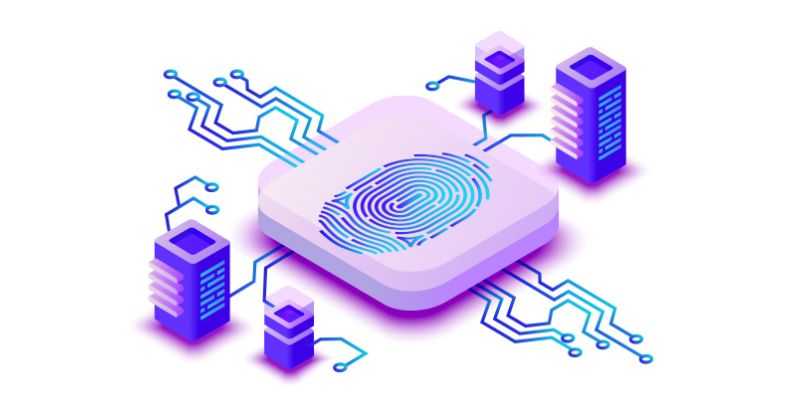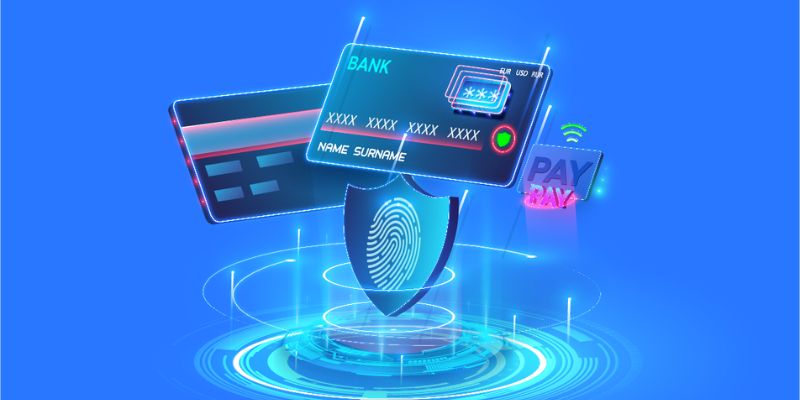I bet you’ve got a digital wallet. But is it a fortress or a fishnet? Let’s talk about Two-factor authentication for digital payments. It’s the watchdog that barks when trouble’s knocking. It’s like adding a deadbolt to your virtual cash stash. I’m here to walk you through the security maze and make sure your money sleeps tight at night. Peek into how this dynamic duo—your password and a second check—team up to guard your gold. It’s no magic trick; it’s solid tech. Follow me, and let’s bolt down that wallet.
Understanding Two-Factor Authentication in Digital Payments
The Essentials of a Two-Step Verification Process
Two-factor authentication, or 2FA, keeps your digital wallet safe. Think of it like a door with two locks. The first lock opens with something you know, like a password. But one lock is not that safe. So, we add a second lock. This lock needs something you have, like a phone. When someone tries to get in, 2FA sends a code to your phone. You need this code to unlock the second lock and get in. It’s a powerful way to stop bad guys from stealing your money.
Let me break it down more. You start by entering your password. Then, the 2FA asks for another thing to be sure it’s really you. This could be a code sent to you by text or an alert on an authentication app. Some people use their fingerprint or their voice, which is pretty cool! This mix of checks means more roadblocks for anyone trying to sneak into your account.
Exploring Types of Authentication Credentials
So what are these “things” the 2FA system asks for? They’re “authentication factors” and there are a few kinds.
One popular one is SMS codes. You know, when you get a text with numbers you have to enter? That’s it. It’s easy but not perfect. Sometimes these texts take time or don’t show up. Also, if someone has your phone and password, they can get in.
Then there’s the authentication apps. These are safer. They make a new code every few minutes that you use to log in. It’s faster than waiting for a text. Even if a thug has your password, they can’t get the code from your app.
And how about your body being a key? That’s where biometric checks come in. Your fingerprint or face can get you into your account. It’s hard for crooks to copy them, which is great. Just imagine paying for stuff with just a look or a touch!
Let’s not forget, emails can be keys too. Paying for stuff online? You might get an email making sure it’s you who’s buying. This way, you’re in control, and no one can buy things without you knowing.
All these methods help make digital payments safer. But they also need to be simple, or we’ll just get fed up. No one likes to wait or jump through too many hoops to buy something.
Using these ways of checking who you are, like codes, apps, or your fingerprint, really boosts how safe your shopping is online. It keeps your money locked up tight and gives bad guys a hard time. And let’s face it, keeping your cash safe while shopping with ease—now that’s a win-win.

The Impact of 2FA on Payment Security Measures
How 2FA for Online Transactions Enhances Security
Everyone’s talking about two-factor authentication, or 2FA. But why? It makes our online shopping much safer. Here’s how: You know the pain of having just a password. It’s like having one lock on your bike. But with 2FA, it’s like adding a second, beefier lock. No thief wants to deal with that hassle!
2FA uses two types of “locks” to check it’s really you. One might be your password. The other could be a code sent to your phone. Sometimes, it could even be your fingerprint. By combining something you know (like a password) with something you have (like a phone) or something you are (like your fingerprint), the security of your online transactions jumps up big time.
Regulatory Compliance: Integrating 2FA with Industry Standards
Now, regulators are stepping in. They say, “We want everyone’s money safe!” So, they’re setting rules about using 2FA in banking and shopping online. This is great for us as customers. It means shops and banks must follow certain steps to protect our cash. For example, they might ask us to enter an OTP code when we buy stuff. That’s a one-time code that proves it’s us.
Another cool thing is that new ways to check our identity are popping up. Industry folks call these “authentication factors.” They’re part of the multi-factor authentication benefits. We’re talking about using our voice or even how we walk as passwords! Wild, isn’t it?
With these new rules, businesses have to keep up. They’re adding layers, like email verification, to our shopping adventures. They’re also making sure they can trust our devices. You might have heard about NFC in payments. And you can’t miss those security tokens at checkout. They’re all about making sure no one but you can spend your money.
All these changes mean fewer bad guys can steal from us. So, thanks to 2FA security measures, we can all sleep better at night knowing our digital wallet is tough as nails!
In short, 2FA is a real superhero in the world of online payments. It helps stop thieves and makes sure our money stays in our pockets. Next time you shop online or check your bank app, give 2FA a little mental high-fives. Because of it, we’re all a lot safer.

Adopting 2FA for a Seamless User Experience
The Role of Biometric Verification in Payments
Two-factor authentication, or 2FA, is like a superhero for your digital wallet. It uses two keys to unlock your money’s safety. Think of it this way: if just one lock is picked, your cash could still be safe, thanks to 2FA. Now, one of these keys is something you know, like a passcode. The other is something you have, like a message on your phone.
Biometric verification is one of the coolest second keys in 2FA. Biometrics use your unique features, such as fingerprints or voice patterns, to check it’s really you. Let’s say you’re buying the latest toy online with your digital wallet. You’ve punched in your password, but to make sure it’s not a robot or a bad guy, the site asks for your thumbprint. You press it onto your phone, and like magic, it knows it’s you! This way, even if someone has your password, they can’t buy a truckload of toys because they don’t have your thumb.
This isn’t just cool; it’s smart too. Using your body’s features means it’s much harder for someone to break in and steal your money. Plus, it’s fast. No waiting for texts or typing long codes. Just a quick tap or a voice command, and you’re ready to go. That’s biometric verification working for you.
Designing 2FA User Experience for Online Shopping
Now, let’s talk about how shopping online with 2FA can be smooth sailing. Designing this experience is all about balance. You want your digital wallet to be a fortress but also not a hassle to get into every time. Imagine having to scale a wall just to get into your own home! Not fun, right?
That’s why experts, like me, work hard to make 2FA easy to use. Think big, easy-to-read buttons for your fingers to tap without thinking. No searching for your glasses here. And how about clear instructions that don’t use fancy jargon? We make sure you can breeze through checkouts without scratching your head in confusion.
Some sites use SMS codes. They text you a magic number to type in, confirming it’s you. Others might use authentication apps. These apps create fresh codes every time you log in, like a constantly changing secret handshake between you and your wallet.
We’re also big on options. Because not all shoppers are the same, right? You might like tapping your phone for NFC payments, while your friend prefers scanning their face. Offering multiple ways to 2FA means you pick what works best for you.
Let’s not forget about those pesky bad connections. You’re in a hurry, but SMS codes take forever when the signal’s weak. That’s why we also use authentication that doesn’t need a strong signal or even the internet, like those apps I mentioned or security tokens – they’re like a VIP pass for your shopping.
In the end, for 2FA to work great, it should feel like it’s barely there. Shopping online should still be fun, just a whole lot safer. With a good 2FA design, you’re in, you’re out, and you’re on your way with your new stuff, knowing your money is locked up tight.

Advancing Towards Safer Transactions
Reducing Payment Fraud through Strong Customer Authentication
How do we cut down on payment fraud? Simple – use strong customer authentication. This means before any money moves, we make sure it’s really you. Think of it like a secret handshake. Only you know it, so only you can get in. We call this two-factor authentication, or 2FA for short.
A two-step verification process goes like this: imagine you’re buying a cool new game online. You punch in your card details. Now, if that was all it took, anyone could do it, right? But with 2FA, there’s more. You might get a code texted to your phone – that’s your second step. This step proves it’s you. No correct code, no sale!
2FA security measures serve as an extra wall. The bad guys hit the first wall – your password. They might break through. But hitting the second wall, they fail. Why? Because they don’t have your phone to get that SMS code. It’s like having a guard dog after your door lock. Double trouble for thieves!
Evaluating Third-party Authentication Services for Payment Security
We also have helpers in this fight to protect our money – third-party services. These guys are like extra muscle in our security gym. Payment security layers are like layers of armor. The more you have, the safer you are. And these services, they’re like blacksmiths crafting that armor.
What works well for digital wallet 2FA? Here, apps are key players. They generate codes, called one-time passwords or OTP for short. These codes change every time. It’s like your password is a chameleon, always changing colors. You use it quick, and then poof, it’s gone. No reuse, so it’s safer.
Then there’s the cool, high-tech stuff – biometric verification. I’m talking fingerprint scanners and voice recognition. Imagine paying with just your thumbprint or by saying “It’s me!” That’s super spy-level stuff, right? But yes, they’re real, and they’re secure. No two people can replicate these—like a personal secret agent for your transactions.
As for what’s on the rise? Keep an eye on token-based confirmation and device trustworthiness. When you pay, tokens represent money. They ensure the right person is at the other end. And for devices, it’s like your phone having a VIP badge. “Trustworthy device on site,” it says. So, we know it’s okay to let them in our digital money club.
In e-commerce, multi-factor authentication benefits us all. Safer shopping means more trust. More trust means more buying and selling. Everybody wins. We apply all sorts of layers to enhance online payment protection, from codes to thumbprints. Each layer, each method has its place. And we keep adding more.
Staying safe in the digital world keeps getting better and stronger, and with the right steps, we not only keep our money safe but also keep the bad guys out for good. Let’s keep marching towards safer transactions, one secure step at a time.
In this post, we tackled the big deal with two-factor authentication, or 2FA, for digital payments. We broke down what 2FA is and why it’s super important to keep your money safe online. You learned about different ways to prove it’s really you when you’re paying for stuff—like getting a code on your phone or using your fingerprint.
We also talked about how having 2FA helps meet rules that make sure everyone’s on the up and up with payment safety. Plus, we got into how using 2FA makes shopping online smooth while keeping bad guys out.
In the end, using 2FA means fewer headaches with fraud and more peace of mind. And let’s be real, feeling sure that your cash is safe is a big win. So, as you tap, click, or swipe to buy, remember that 2FA is your silent hero, keeping your pennies protected while you shop with ease. Keep it in mind next time you check out online!
Q&A :
What is two-factor authentication for digital payments?
Two-factor authentication (2FA) for digital payments is a security process that adds an extra layer of verification to ensure that the person attempting to make a transaction is authorized. This method typically involves the combination of two different types of credentials before access is granted to make a payment. These credentials include something you know (like a password or a PIN), something you have (like a smartphone or a hardware token), and sometimes something you are (like a fingerprint or facial recognition).
How does two-factor authentication enhance the security of online transactions?
Two-factor authentication significantly enhances online transaction security by requiring the user to provide a second form of identification beyond just a password. This makes it much harder for unauthorized individuals to gain access to financial accounts because even if a password is compromised, the second factor — which often takes the form of a one-time code sent to a mobile device or generated by an authentication app — acts as an additional barrier.
Can two-factor authentication be bypassed or hacked?
While two-factor authentication substantially increases account security, it is not foolproof and can potentially be bypassed or hacked through methods such as SIM swapping, phishing attacks tailored to capture the second factor, or exploitation of weaknesses in the communication channel used for delivering one-time codes. Users should remain vigilant and combine 2FA with other security best practices.
What types of two-factor authentication methods are available for digital payments?
There are several types of two-factor authentication methods available for securing digital payments. Common methods include SMS text message codes sent to your mobile device, push notifications through authentication apps, biometric authentication like fingerprint or facial recognition, hardware tokens that generate time-based codes, and software tokens or apps that generate codes or verify authentication requests.
Is two-factor authentication mandatory for all digital payment platforms?
The requirement for two-factor authentication in digital payment platforms can vary by region, financial institution, and payment network policies. Many platforms have implemented it to comply with regulatory standards such as the Payment Card Industry Data Security Standard (PCI DSS) or the European Union’s Revised Directive on Payment Services (PSD2). However, even if it’s not mandatory, it is generally recommended for improving the security of online transactions.

